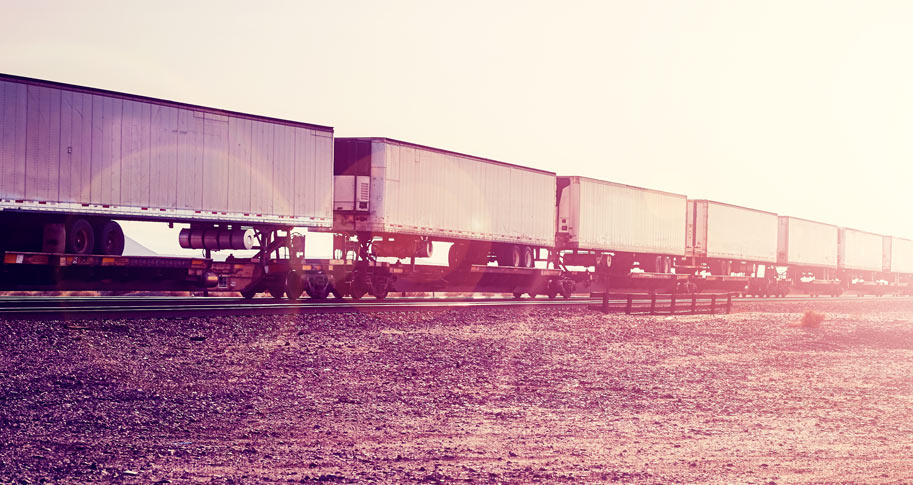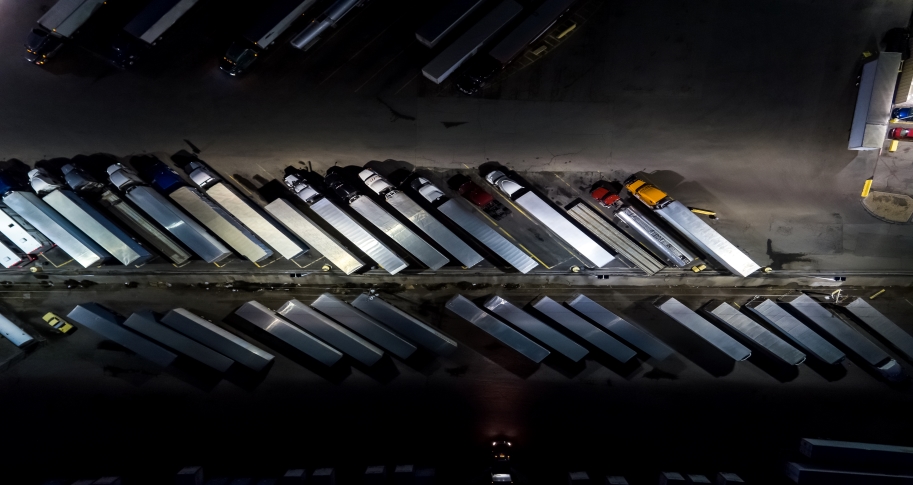
There’s little debate that intermodal transportation fosters environmental sustainability. As J.B. Hunt Transport CEO John Roberts has said, while the logistics world waits on something better, “Why don’t we load up the trains and, you know, do some math on carbon emissions?”
J.B. Hunt, of course, has been loading up the trains since 1989, when it became the first trucking company to form comprehensive partnerships with railroads. Rail intermodal volumes have since surged – from 5.6 million containers and trailers in 1990 to 9 million in 2000, 11.1 million in 2010, and 14.5 million in 2018 – according to the Association of American Railroads.
Volume dipped slightly in 2021 to 14.1 million containers and trailers, but trucking industry leaders are bullish on intermodal, in part because it is good for the environment. In 2021, in fact, JBHT announced plans to increase its container fleet by 40% over the next 3-5 years.
Intermodal is environmentally friendly because one train carrying the same amount of freight as hundreds of trucks reduces highway congestion while lowering greenhouse gas emissions by up to 75%. Craig Harper, J.B. Hunt’s chief sustainability officer, said intermodal is “2.5 times more efficient” than transporting the same load solely by truck. “There are very few things you can do to get that kind of step change in the amount of CO2 emissions you generate,” he said.
There are also some potential benefits to intermodal in terms of annual fill rates for shippers. Intermodal transportation is typically associated with large orders – meaning that if other factors remain equal, annual fill rates will increase in step with order size. There is a higher lead time uncertainty with intermodal, but the increased order quantity can offset this risk. However, if order quantities are not increased, safety stock levels may need to be raised.
While those facts make a strong case for using intermodal for long-haul shipping, significant obstacles impede its path toward continued growth as an environmentally friendly freight option. Only smart policy decisions in the following four areas can clear the way forward.
Infrastructure Barriers
A significant investment is required to meet front-end expenses for building, expanding, and maintaining things like railyards, tracks, intermodal connectors, and terminals.
Smart policies should support operators who invest in such infrastructure. Transloading operations that move freight from 40-foot shipping containers to 53-foot containers for trucks and trains, for instance, can provide more efficient logistics. And if those facilities are outside of urban centers, the potential exists for reduced traffic and emissions in congested areas.
BNSF Railway’s planned $1.5 billion Barstow International Gateway, for example, promises the “direct transfer of containers from ships at the ports of Los Angeles and Long Beach to trains for transport through the Alameda Corridor onto the BNSF mainline up to Barstow.” The railyard, intermodal facility, and warehouses for transloading at Barstow are planned to use “clean energy-powered cargo-handling equipment” for staging and moving freight.
Competition Barriers
The list of players impacted by intermodal policy is long – large logistics companies, independent trucking operators, railroads, shipping companies, unions, drivers, manufacturers, retailers, and, of course, consumers. Their interests and agendas don’t always align, which speaks to the need for compromise in the interest of the greater good.
Right now, for instance, more than 600 railroad companies exist in the U.S.; however, the six Class I railroads account for 68% of freight rail mileage and 94% of the revenue. Each of the seven Class I firms is privately owned and operates as a regional duopoly with one of the other Class I operators. These operators handle most intermodal freight because they provide access to the longer routes, where intermodal makes the most economic sense.
This limited competition tends to result in lower service levels within a region. It also results in needless friction when moving loads between regions. Moving freight by rail, say, from California to New Jersey requires taking it off a train in Chicago, moving it by truck to another railyard, and loading it onto the train of a different Class I carrier.
Competition barriers also can spring up between workers and shippers. The threatened railway strike in the last quarter of 2022 had the potential to halt service completely and indefinitely. But union frictions are also apparent in other aspects of intermodal delivery. For instance, Teamsters have pushed to have drayage drivers be employees of the ports rather than independent owner-operators, thereby increasing union membership.
Regulatory Barriers
Regulations around things like hours of service for drivers, electronic logging devices, autonomous vehicle technologies, and size and weight restrictions for trucks all significantly impact intermodal and long-haul trucking.
Policies that promote autonomous trucks for long-haul routes, for instance, could make that a more competitive option with intermodal. It also would help relieve the driver shortage, freeing up additional human drivers for intermodal and urban hauls.
Policies involving hours of service, including regulations for electronic logging devices, also affect driver availability and efficiency. Policies that are too restrictive, for example, create inefficiencies by sidelining drivers who otherwise might help relieve congestion in railyards, while those that reduce time drivers spend on paperwork allow them to spend more time behind the wheel. And policies that drive accuracy and transparency of data can help drivers and fleet managers make better decisions about scheduling while reducing the temptation to falsify records.
Perhaps the most contentious regulatory arena involves size and weight limits for trucks on the interstate. The option of bigger, heavier trucks would increase the appeal of over-the-road options for some shippers, thus reducing their interest in intermodal.
On the other hand, increased truck sizes and weights could result in more strain on infrastructure, diverting public funds to highway repairs that otherwise might go to infrastructure for intermodal facilities.
The best regulations, of course, are only as good as the enforcement that follows. The American Trucking Associations, for instance, supported legislation that holds intermodal equipment providers responsible for maintaining chassis; however, a lack of enforcement, they say, means deficiencies often are not discovered until a roadside inspection, where the driver is held responsible.
Network Efficiency Barriers
Inefficiencies in intermodal networks also include issues related to standardization of container sizes and policies that support smart planning for the location of new industries and for the movement of goods across the country.
Consider the products that arrive in a shipping port in a 40-foot container. Because of international trade imbalances, a shipper in, say, Asia, typically is eager to get that container back so it can be reloaded. The might even pay to have it shipped back empty rather than wait for it to be loaded with American-made goods. So, the goods are transloaded to 53-foot containers for the journey to their final destination and the empty 40-foot container is shipped back to Asia.
Meanwhile, if the goods from Asia end up in a U.S. destination that receives far more products than it sends to the rest of the country, a similar imbalance arises. Empty 53-foot containers either pile up like residents on the mythical Island of Misfit Toys or they are moved by train or truck to a city or port that needs them.
There’s still plenty of room in the freight industry for truckers and trucking companies that don’t partner with rail or ocean shippers. In general, the longer the routes, the more that intermodal options offer financial and environmental benefits that are hard to ignore. Those options figure to increase and become more attractive in the near future, but only if they don’t run into barriers that stop them in their tracks.







